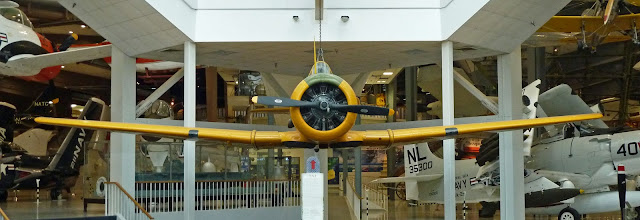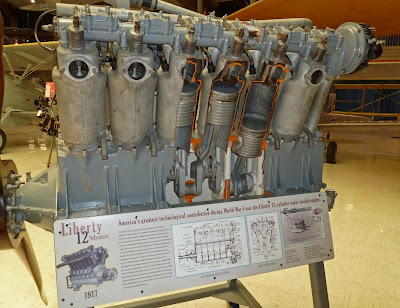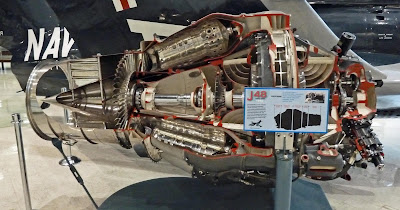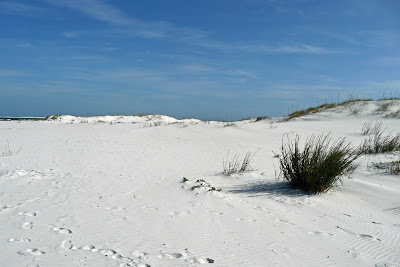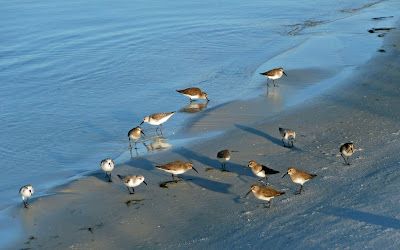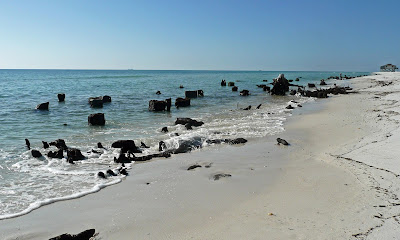 Although natural areas along the coast are preferred, there are populated places along the Florida Panhandle worthy of investing time for a visit. Pensacola, the western most city in the state is certainly one of those. The downtown area has interesting architecture and is still alive with retail, restaurant, government, and churches.
Although natural areas along the coast are preferred, there are populated places along the Florida Panhandle worthy of investing time for a visit. Pensacola, the western most city in the state is certainly one of those. The downtown area has interesting architecture and is still alive with retail, restaurant, government, and churches.

And, some art in the park.

Pensacola has three very special places, any of which is worthy of a stop. Joe Patti's Seafood Market has a huge variety of fresh food from the ocean. The widest variety ever witnessed by the Last Dance crew. A stop for some fresh shrimp turned into a major shopping experience. They expect that to happen and have coolers to sell for those who purchase large amounts and dry ice if your trip home is long.

The seafood selection is simply amazing and the prices most reasonable. In addition, they have a deli and cheese shop and a whole section devoted to sauces and spices. If you are ever near Pensacola, you must go down to the waterfront and find Joe Patti's.
A second reason to stop in Pensacola is the Naval Air Museum. It is funded privately, staffed by an enormous cadre of volunteers, and is free. The quality of the exhibits and the number of examples of airplanes rivals the Smithsonian.

There is an outside display area, accessed by riding on a guided tour bus. The driver/tour guides are retired Navy pilots.
Aircraft carriers are a large part of Naval aviation. Fitting the many required to tell the story of development over the years into the museum was accomplished by models, all built to the same scale.
The Navy's first airplane, purchased in 1911, is on display. It is not far removed from the Wright brothers' first design.
The evolution of airplane design is represented from early vintage plans through most recent jet fighters.
Many of the plane designs did not survive in any collection of the Navy or private collectors. Crashed planes were often recovered from lake and sea bottoms and painstakingly restored. The plane on the right, a 1930's f3f built by Grumman Aircraft, was found in the Pacific Ocean.
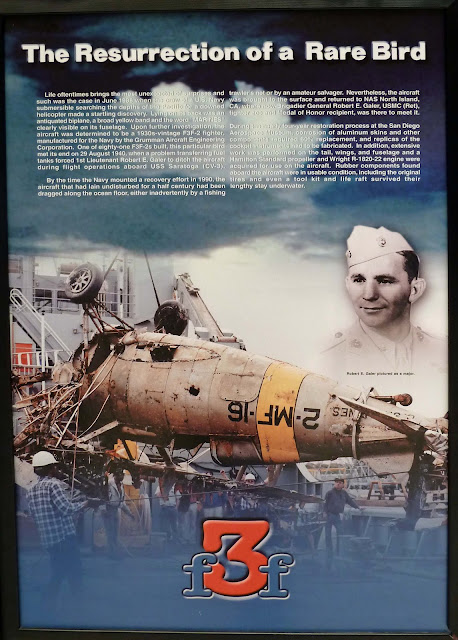
 This early flying boat, the NC4 - the fourth plane designed by the Navy and Curtis Aircraft, is interesting in many aspects. It was designed as an antisubmarine aircraft. It is powered by four Packard-built V-12 Liberty engines, arguably one of the best designs of the WWI era. The NC4 has three engines facing forward and the fourth facing backward in the center. This very plane is the first plane to fly across the Atlantic, leaving New York in May, 1919, and taking 19 days to fly to Portugal.
This early flying boat, the NC4 - the fourth plane designed by the Navy and Curtis Aircraft, is interesting in many aspects. It was designed as an antisubmarine aircraft. It is powered by four Packard-built V-12 Liberty engines, arguably one of the best designs of the WWI era. The NC4 has three engines facing forward and the fourth facing backward in the center. This very plane is the first plane to fly across the Atlantic, leaving New York in May, 1919, and taking 19 days to fly to Portugal.The engines that powered planes are displayed individually. The craftsmen that rework the planes and engines are called "magicians" by the staff. Many engines have been made into cutaways so that the design of the engines can be easily examined. This Liberty engine shows the very thin walls of the cylinders to create a lightweight engine.
Even with four of these Liberty V-12 engines, the NC4 flew at only 85 mph.
Radial engines became the norm for most aircraft. To make the engines larger and create more horsepower, more cylinders were added, until they were fit very tightly. Nine cylinders was the practical maximum. Radial four-cycle engines have an odd number of cylinders for balance, with every other cylinder firing - 1, 3, 5, 7, 9, 2, 4, 6, 8.
To create larger engines, designers put two rows of cylinders on one crankshaft. The cylinders are staggered since these engines are air cooled, needing the flow of air across the heads and cylinders to keep the engines from overheating. This design has two rows of 7 cylinders.
Eighteen cylinders, two rows of 9 cylinders arranged radially, was the final for this type of engine. The cutaway of a Wright R-3350 Duplex Cyclone engine is above. This is one of the largest (3328 cu in) and most powerful (2200 - 3700 hp) reciprocating airplane engines ever produced. Designed before WWII, it did not develop in reliability until near the end of the war. These engines powered the B-29 and moved into the commercial airlines after the war.
The Lockheed Constellation and Douglas DC-7, two popular civilian airliners, were powered by Wright R-3350 engines. The Constellation (TWA version on right) was known as the most luxurious and fastest commercial airplane of the 1950's. It is distinguished by the triple tails and dolphin-shaped fuselage. With a top speed of 340 mph, it was faster than a Japanese Zero fighter. A military version, adapted as a radar plane, is on display at the museum (in the third photo in this section).
The reciprocating engine, with pistons and valves having to change direction of travel 1000's of times a minute, reached its maximum development during the mid 20th century. They were replaced by rotary engines, where the moving parts spin in one direction. These turbine engines are known as "jets." Cutaways of jet engines were ample.
The first jet-powered fighter plane was developed by the Germans near the end of WWII. That plane is on display.

The Naval Air Station Pensacola is home to the Blue Angels precision flying team. The museum allows one to get a close view of these jets.
Five Sisters - A third reason to stop at Pensacola is a restaurant. Five Sisters (it is really operated by five sisters) is a southern/soul/creole restaurant located in downtown. The sausage and crab gumbo put the New Orleans restaurants to shame - full of flavor and meat. No photographic evidence is offered. One cannot catch flavor with a camera. Oh, it has an interesting decor and friendly, entertaining staff, but the Naval Air Museum took the life out of the camera battery. You will have to visit Five Sisters and sample yourself.












